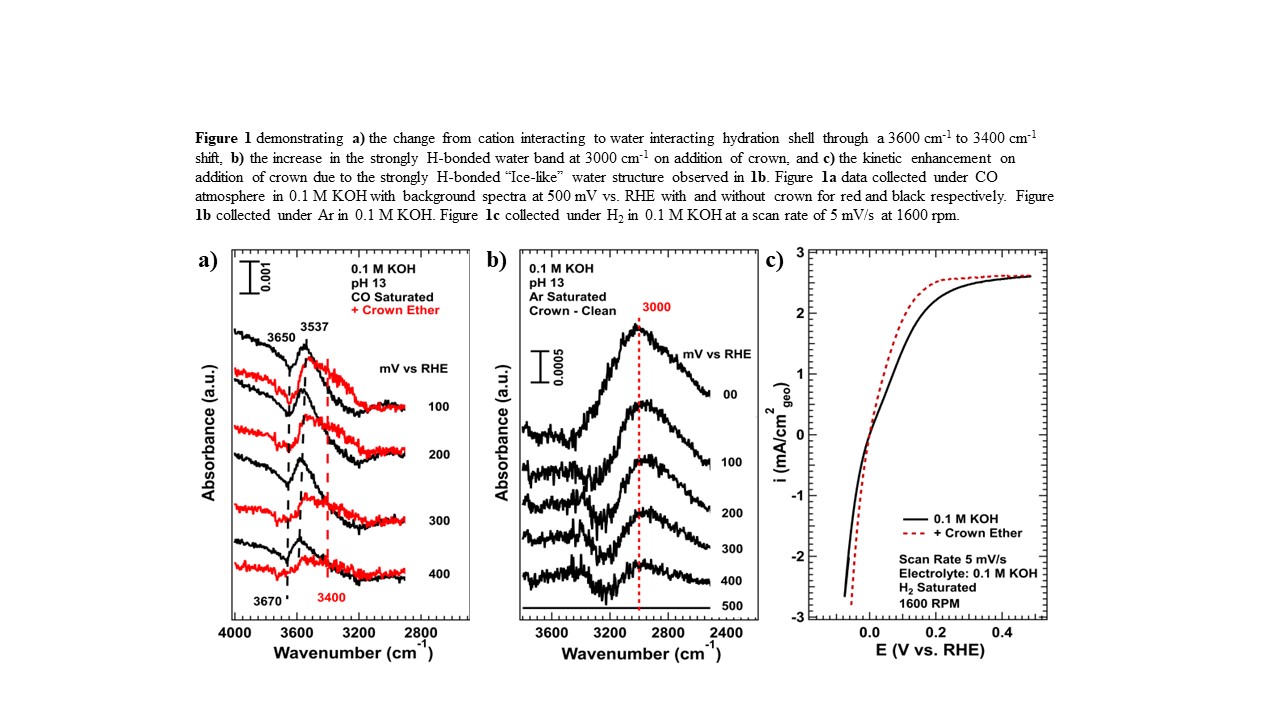The 2 orders of magnitude loss of Platinum Group Metal (PGM) activity toward Hydrogen Oxidation and Reduction reactions (HOR/HER) has hindered implementation of alkaline electrochemical devices and highlighted a knowledge gap in our fundamental electrochemical understanding.
1 Monteiro
et al. showed an activity dependence on interfacial cation concentration and identity, suggesting charge dense cations better stabilize the OH
- produced from unfavorable water splitting in HER near the negatively charged surface.
2 We challenge this notion by demonstrating that competition for water molecules between Outer Helmholtz Plane (OHP) cations and interfacial water is responsible for the activity loss.
ATR-SEIRAS has been used to analyze the structure of cation hydration shells on Pt, where water interacts mainly with alkali metal cations through the increase of a 3600 cm-1 ν(O-H) stretch and weak interactions with surrounding interfacial water.3 Through chelation with crown ether, these hydration shells convert from strongly to weakly cation interacting, favoring instead hydrogen bonding with other water molecules, shown with increasing absorption bands at lower wavenumbers (3400 cm-1). This transition is accompanied by an increase in 3000 cm-1, assigned to strongly bonded âice-likeâ interfacial water. We show similar bands for other enhancing additives in the literature, showing that increasing âice-likeâ hydrogen bonded water is the unifying descriptor for improving PGM HOR/HER activity.
- Durst, J. et al. New insights into the electrochemical hydrogen oxidation and evolution reaction mechanism. Energy Environ. Sci. 7, 2255â2260 (2014).
- Monteiro, M. C. O., Goyal, A., Moerland, P. & Koper, M. T. M. Understanding Cation Trends for Hydrogen Evolution on Platinum and Gold Electrodes in Alkaline Media. ACS Catal. 11, 14328â14335 (2021).
- Yamakata, A. & Osawa, M. Cation-dependent restructure of the electric double layer on CO-covered Pt electrodes: Difference between hydrophilic and hydrophobic cations. J. Electroanal. Chem. 800, 19â24 (2017).


